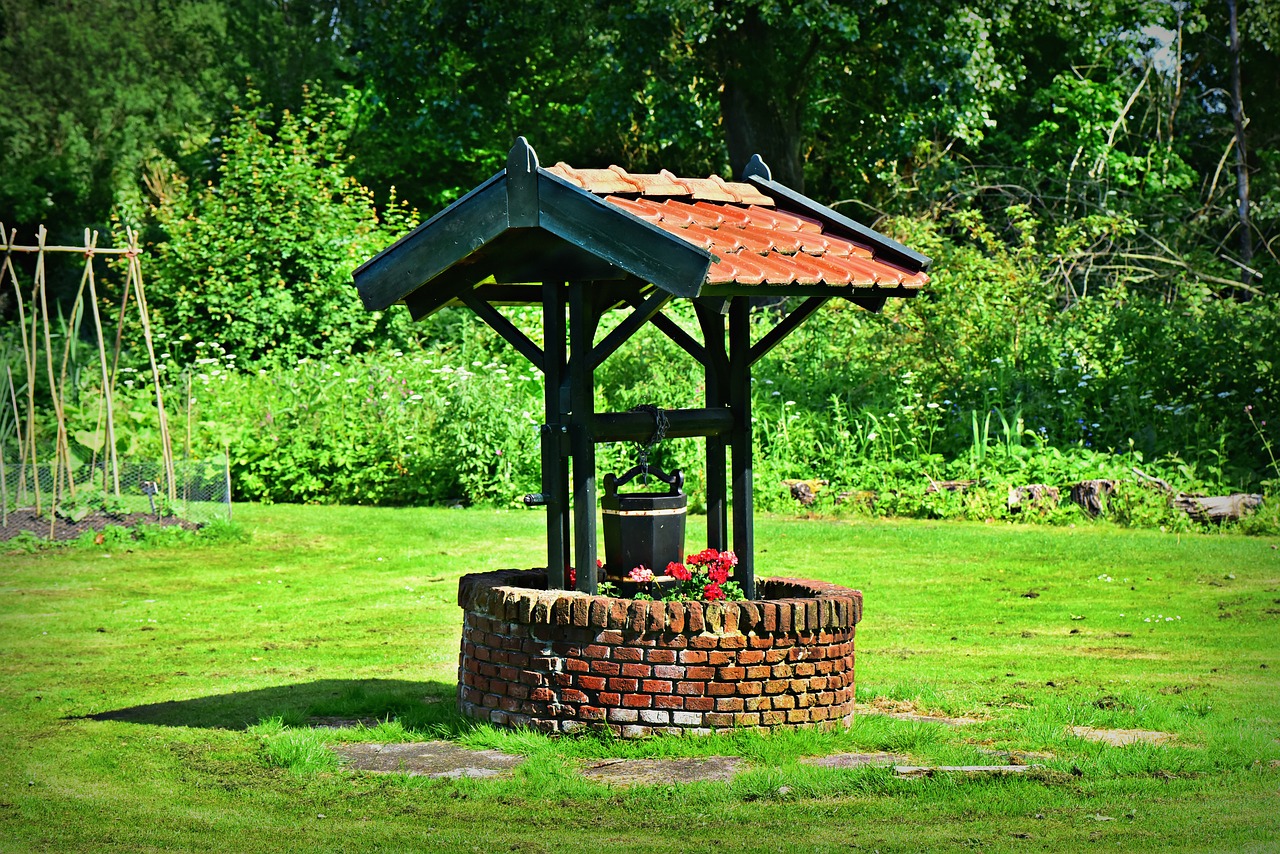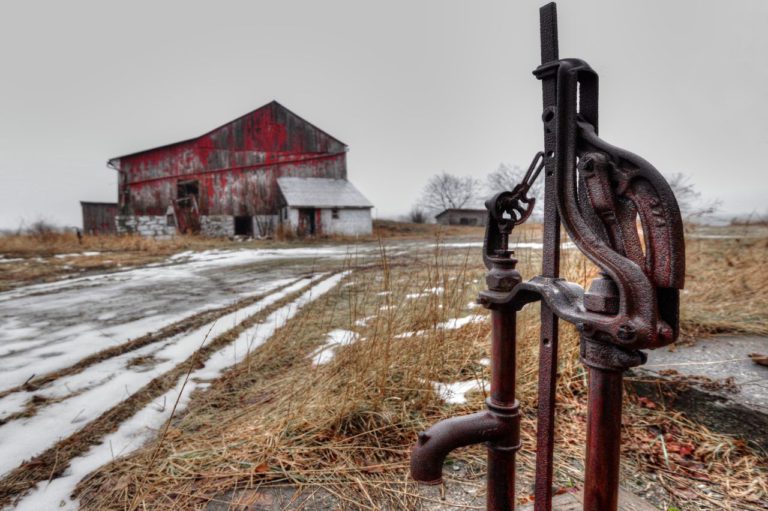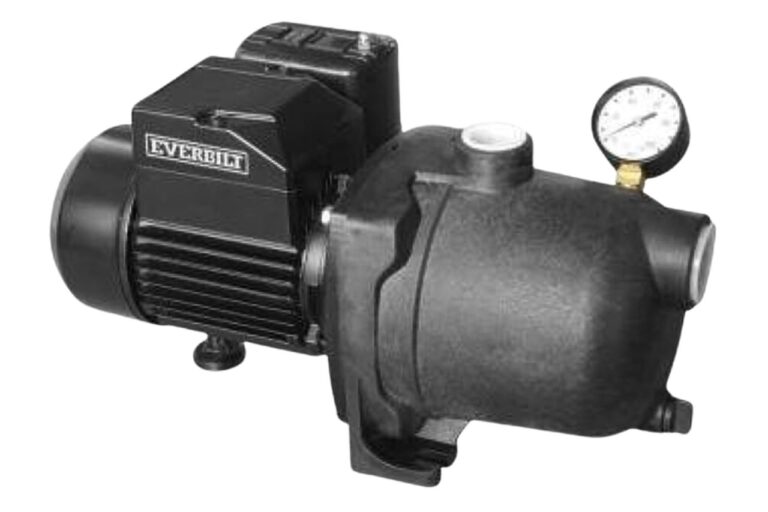Can a Well Pump Freeze? All the Facts You Need To Know
Winter can be a challenging time for many homeowners, especially when it comes to managing water supply from a well. One common concern during the colder months is the possibility of a well pump freezing. As temperatures drop, this vital piece of equipment may run the risk of seizing up, potentially leaving you without water. But is it inevitable, or can you take steps to prevent it? Understanding the risks and solutions can make all the difference.
“A frozen well pump can be more than an inconvenience; it can lead to costly repairs and significant disruptions in your daily life.”
In this comprehensive guide, we’ll explore the causes, signs, and solutions for well pump freezing. We’ll also dive into both short-term fixes and long-term strategies to ensure that your water supply remains uninterrupted during the harshest winter months.
Understanding the Risks: Can Well Pumps Freeze?
When temperatures plummet during winter, well pumps are at risk of freezing, a situation that can disrupt your water supply and potentially cause expensive damage. Understanding whether your well pump can freeze involves looking at various factors like the type of pump, location, and protective measures you have in place.
DIY Guide to Installing a Deep Well Pump
Top Causes of Well Pump Freezing
Understanding why well pumps freeze is crucial for effective prevention. The primary culprit behind freezing is exposure to frigid temperatures, particularly in regions with extreme winter climates. When temperatures drop below freezing, any uninsulated or exposed parts of the well pump system can become vulnerable to ice formation.
Another significant cause is poor well construction or inadequate insulation. Well pumps that are not installed below the frost line, which is the depth at which the ground does not freeze, are at a greater risk. Additionally, pumps that lack proper housing or insulation around them can easily be affected by freezing air.
Furthermore, any water left stagnant in the pipes can freeze and lead to a blockage. This is particularly common in systems without a weep hole or a one-way check valve, like those in the Simple Pump, which ensure that water does not remain in the pump head during cold weather. A stagnant water blockage can exert pressure on the system, causing potential damage when the ice expands.
Finally, lack of regular maintenance can contribute to freezing issues. Debris or malfunctions that go unnoticed can impede the flow of water, allowing it to sit in places where it can freeze. Keeping your well pump system well-maintained ensures that it functions smoothly, reducing the risk of freezing during the cold months.
Signs Your Well Pump Might Be Frozen
If you suspect that your well pump might be frozen, there are several telltale signs that you can look for. One of the most noticeable indicators is a complete lack of water flow from your faucets. This can occur because the frozen water in the pump effectively blocks any water from moving through the system.
Another sign to watch for is fluctuating water pressure. If you notice that the water pressure is irregular or weaker than usual, it could mean that ice is forming and restricting the flow in your pipes or pump. Additionally, unusual noises coming from the well pump, such as loud banging or groaning sounds, might indicate ice trying to move through the pump or pipes.
In some cases, you may detect visible frost or ice on the exterior components of your well system, particularly on pipes or the pump housing. This is a clear external sign that the temperatures have dropped enough to potentially freeze the well components.
If you experience any of these signs, it’s crucial to act quickly to prevent further damage. Immediate steps can include checking your well pump and surrounding pipes for visible ice and ensuring your indoor temperature remains above 40 degrees Fahrenheit, especially if you have a jet pump situated inside your home. For persistent issues or if you’re unable to thaw the frozen parts, professional assistance from experts like Greco & Haines is recommended.
Immediate Steps to Take if Your Well Pump Freezes
If you suspect that your well pump has frozen, acting quickly can make all the difference. Here’s what you need to do right away:
- Turn Off the Power: Safety first! Immediately turn off the power to your well pump to prevent any electrical hazards or damage to the pump itself.
- Locate the Frozen Spot: Identify where the freeze is occurring. In many cases, the frozen area can be the wellhead, pipes, or other components of the system that are exposed to the cold.
- Gradual Thawing: Use a space heater, hairdryer, or a heat lamp to gradually thaw the frozen sections. Avoid using open flames or high heat sources, as they can damage pipes and components.
- Inspect for Leaks: As the frozen parts begin to thaw, watch closely for any signs of leaks or cracks in the pipes, which might have been damaged by the freezing process.
- Check Water Flow: Once you believe the system has thawed, turn the power back on and check for water flow. If the water is running smoothly, wait a bit to ensure consistent flow.
If you are unable to thaw the frozen spot or suspect that the system has suffered damage, do not hesitate to seek professional help.
Short-Term Solutions for a Frozen Well Pump
If you discover that your well pump has frozen, don’t panic. Immediate action can mitigate damage and restore your water supply promptly. Here are some short-term solutions you can implement:
- Use Heat Sources: One effective method is to use portable heat sources such as a space heater or heat lamp. Position these near the frozen pump and pipes, ensuring you maintain a safe distance to avoid potential fire hazards. Gradually increasing the temperature around the pump can help thaw the ice.
- Tent Structure: If you have materials on hand, consider building a temporary tent over the well pump. Using 2x4s and tarps, you can create a tent-like structure. Place work lights or a small heater inside to generate warmth. This makeshift setup can trap heat and expedite the thawing process.
- Hot Water Application: Applying hot water to the frozen pump and pipes is another quick fix. Carefully pour hot (not boiling) water over the affected areas. This should be done cautiously to avoid sudden expansion and further damage to the pipes.
Long-Term Prevention Strategies for Well Pump Freezing
Preventing your well pump from freezing can save you a lot of hassle and expense in the long run. Here are some effective strategies to consider:
Insulate Your Well Pump System
Proper insulation can significantly reduce the risk of freezing. You can wrap insulation materials around exposed pipes and the pump itself. Insulating sleeves and heat tape are excellent options that provide an extra layer of protection against the cold.
Install a Frost-Proof Pump
One of the best investments you can make is installing a high-quality, frost-proof pump like the Simple Pump deep well pump. This pump is specifically designed to withstand freezing temperatures and includes features such as a one-way check valve that helps drain water from the pump head, minimizing the risk of ice formation.
Utilize a Weep Hole
A weep hole, drilled in the top drop pipe, is another critical feature to prevent freezing. This small hole allows residual water to drain out, preventing it from accumulating and freezing inside the pump. Simple Pump models come equipped with this feature, making them winter-ready.
Consider a Pitless Adapter
A pitless adapter can help keep your water lines below the frost line, safely underground. This adapter allows the water lines to be connected without exposing them to open air, thus reducing the risk of freezing. Using this method means the well pump like operates efficiently even in the harshest winter conditions. Simple
Keep Faucets Dripping Pump don’t necessarily
On especially cold nights, keep your faucets slightly dripping. This small flow of water can prevent the pipes from freezing by require ensuring continuous movement through the system. one
Check and Maintain Well Components Regularly
Regular maintenance can go a long way in preventing freeze-related issues. Inspect the well cap to ensure it’s tightly sealed, verify that the water lines are buried at least 36 inches underground, and check both outdoor and indoor plumbing lines for any signs of wear or potential problems.
Winterize Your Well System
Taking the time to winterize your well system can be a game-changer. Drain all the water from the pump and pipes when expecting extremely cold weather. If necessary, use a pump house or cover to shield the pump from outdoor elements, though quality pumps
In Closing
Taking the necessary precautions to protect your well pump from freezing can save you from potential headaches and costly repairs down the line. From insulating your system to regular maintenance, each step plays a crucial role in ensuring your water supply remains unaffected during the cold months. Remember to winterize your well system before temperatures plummet, and don’t hesitate to seek professional assistance if needed.
By staying proactive and informed, you can prevent your well pump from freezing and keep your water flowing smoothly all winter long. For any intricate issues or if you’re unsure about the condition of your well pump, contact pump experts who can provide tailored advice and solutions.
In colder regions, taking these preventative measures becomes even more critical. But even if you live in milder climates like Napa Valley, where temperatures seldom drop below freezing, it’s always better to be prepared. Your well pump is an integral part of your home, and with the right care, it can continue to serve you efficiently regardless of the season.
Frequently Asked Questions
Got questions about your well pump freezing? You’re not alone. Freezing temperatures can wreak havoc on well systems, causing a flurry of concerns for homeowners. In this FAQ section, we address the most pressing queries related to well pump freezing. Whether you’re worried about potential damage, the specific temperatures that pose a risk, or which types of pumps are most vulnerable, we’ve got you covered. Let’s dive into the details to ensure your well system stays functional, even when the mercury drops.
Can a frozen well pump be damaged?
Yes, a frozen well pump can indeed be damaged, and the consequences can range from minor issues to severe problems requiring extensive repairs. When water inside the pump or pipes freezes, it expands, which can lead to cracks in the pump housing, ruptured pipes, or damaged valves. This kind of damage not only disrupts your water supply but can also be quite costly to fix.
It’s important to recognize the signs of a frozen well pump early. Signs such as unusually low water pressure, strange noises from the pump, or no water at all from your faucets could indicate that freezing has occurred. Ignoring these signs can exacerbate the damage, leading to more expensive repairs down the line.
Moreover, repeated freezing and thawing cycles can weaken the pump’s structural components over time, even if there is no immediate visible damage. This can reduce the longevity of your pump and affect its overall performance. Therefore, taking proactive measures to prevent freezing, such as insulating well components, using a pitless adapter, or keeping faucets dripping, becomes crucial, especially during the winter months.
What temperature causes a well pump to freeze?
Well pumps are susceptible to freezing when temperatures drop below the freezing mark of 32°F (0°C). However, several other factors, such as exposure to wind, moisture build-up, and inadequate insulation, can contribute to freezing even at slightly higher temperatures. In regions where winter temperatures frequently fall below this threshold, taking preventive measures becomes essential to keep your well system operational and to avoid potential damage.
Interestingly, it’s not just about the outside temperature. The location of your well pump plays a significant role too. For instance, if you have a jet pump situated inside your house or basement, maintaining a surrounding temperature above 40°F can generally prevent it from freezing. Meanwhile, well pumps located outside are more vulnerable and usually need to be housed in insulated enclosures to fend off the cold effectively.
Are there specific types of well pumps that are more prone to freezing?
When it comes to well pumps and freezing risks, different types of pumps do have varying levels of susceptibility. Generally speaking, pumps that are located outdoors are more prone to freezing compared to those that are installed indoors or underground.
Jet pumps, for instance, are usually installed inside your home or basement, where the temperature is more controlled. Because they operate in a warmer environment, jet pumps are less likely to freeze. However, the water pipes connected to these pumps must still be insulated and kept above freezing temperatures.
On the other hand, submersible pumps are installed deep within the well itself and are surrounded by groundwater. This makes them highly resistant to freezing since they are insulated by the earth and the water. That said, any piping that extends above ground from a submersible pump should be properly insulated to prevent freezing.
A key player in preventing freezing is the Simple Pump. This well pump incorporates several design features aimed at mitigating freezing risks, such as a one-way check valve that helps drain water from the pump head, or a weep hole in the top drop pipe to allow water drainage and prevent ice formation. Furthermore, using accessories like a pitless adapter ensures that the water lines remain below the frost line, thereby safeguarding against freezing.
Ultimately, understanding the specific type of well pump you have, and its installation location, will help you assess and mitigate the freezing risks effectively. By taking appropriate measures, you can protect your well pump system and maintain its efficiency, even in harsh winter conditions.







